Colonel William Light began his survey of the City of Adelaide near the spot that is now the corner of North Terrace and West Terrace. European creation of the city spread from there. The parklands, which surrounded the city in Light’s Plan of Adelaide, were never reserved for recreational use along North Terrace. Industry and transport dominated North Terrace west from the early years of colonisation. By the 1880s eight hotels provided sustenance for local workers and working class residents and accommodation for travellers. Cattle and sheep markets, terrace housing, and railway yards and workshops contrasted with the cultural institutions and larger homes of North Terrace east. But from the late twentieth century things changed again. Building conversions and demolition paved the way for new cultural and educational facilities along North Terrace west. Upgraded hotels provided accommodation for visitors wishing to see the sights of Adelaide and its surrounds.
Early North Terrace west
Soon after settlers began arriving on the mainland in 1836, they moved from Holdfast Bay (Glenelg) to the proposed site of Adelaide. They camped near the River Torrens, not far from the current northeast corner of North Terrace and West Terrace. Their reed huts were arranged in two rows – Buffalo Row and Coromandel Row – named after the ships that brought them to the colony. The start of Light’s survey on 11 January 1837 was marked by a monument erected by the Adelaide City Council in 1928.
In Light’s Plan of Adelaide, North Terrace connects West Terrace and East Terrace. Between West Terrace and King William Street, North Terrace is bisected by Morphett Street. Although Light set out the main city streets, they were named by a Street Naming Committee on 23 May 1837.
Light’s map as printed in 1840 shows that all but one of the 16 ‘town acres’ set out along North Terrace west were preliminary purchases made in England prior to European occupation of the site. Some preliminary purchasers, such as British diplomat Lord Stuart de Rothesay, bought land in Adelaide as an investment, never intending to emigrate. Other buyers of land along North Terrace west became well-known colonial figures. Nathanial Alexander Knox, an officer of the East India Co. and a founder of the Adelaide Club, purchased town acre 1. George Morphett, younger brother of John Morphett after whom Morphett Street is named, bought town acre 8. George prospered as a lawyer with land and banking interests. He was a Member of the House of Assembly in 1860–61, before returning to England where he died in 1893.
Within two years side streets and laneways were emerging along North Terrace west as the acres were occupied and subdivided. George Strickland Kingston’s map of 1842 shows buildings, largely of wood, pise (rammed earth), or lath and plaster on 11 acres. Three substantial buildings of stone stand out: Morphett’s offices on acre 8, Trinity Church on acre 9 and the first Bank of South Australia office on acre 15.
Anglican Trinity Church (later Holy Trinity) is South Australia’s oldest church. It was constructed in 1838 and enlarged in 1845. A rectory was built next door in 1849. Adelaide’s first hospital was located to the east of the church in a small thatched cottage. The Colonial Infirmary was established by Dr Thomas Young Cotter in 1837. In 1839 the hospital was relocated to Emigration Square on West Terrace where it could tend to new arrivals.
It was not long before several hotels were constructed to cater for the colonists. The Black Swan Hotel opened in 1845, followed by the Newmarket Inn in 1847 and the Buck’s Head Hotel in 1848. The Black Swan was rebuilt 1883 and converted to the Hotel Centralia in 1940. The Buck’s Head was demolished in 1965. The Newmarket Inn (Newmarket Hotel from 1883) remains as a landmark at the junction of Port Road with North Terrace and West Terrace.
A livestock market was situated across the road from the Newmarket Inn on the northern side of North Terrace west. After 1841 the market was connected to the City Slaughter House built to the west of Adelaide Gaol. Slaughter House Road ran from the terrace, behind the livestock yards to what is now Bonython Park. The noise, dust and smells from the many cattle and sheep were part of the atmosphere of this end of North Terrace. The yards and slaughterhouse continued to operate until July 1913, when they were relocated to Gepps Cross.
While housing was concentrated towards West Terrace, secondary industry was soon established to the east of Morphett Street. John Wyatt arrived in South Australia on 22 April 1837 and by 1841 had set up an engineering business. His Adelaide Foundry was first located on Grenfell Street, but moved to larger premises near the corner of North Terrace and Victoria Street in 1847. The new foundry and workshops were operated by his sons George and Joseph until sold to A Jones & Sons in 1878.
Parliament, transport and travel
The character of North Terrace west close to King William Street was firmly established in the mid nineteenth century. The South Australian Parliament, the Adelaide Railway Station and facilities for travellers would continue to dominate this end of the street into the twenty-first century.
The first Legislative Council building was constructed in September 1843 on the northern side of the terrace, close to King William Street and Government House. It was replaced with a larger stone building in July 1855 and extended to cater for a bicameral parliament in 1857. Additions and alterations continued until after the Second World War. From 1976 the original complex was restored to its 1875 structure as Old Parliament House.
Adelaide’s first railway station was constructed almost next door to the Legislative Council in 1856. Passenger, freight and livestock traffic were handled by the station and its attached yards. Livestock was offloaded adjacent to the stockyards and the Newmarket Inn. Stands for Hackney carriages, public conveyances, drays and carts were established by the Adelaide City Council between Old Parliament House and the station. Lines connected Adelaide with Port Adelaide, then northern towns. The 1856 Adelaide–Port Adelaide line was the first government owned and operated steam railway in the British Empire.
The railway station reinforced the clustering of hotels along North Terrace west. Initially serving locals and those arriving in Adelaide by horse-drawn transport, hotels re-orientated to railway workers and travellers. The Gresham Hotel, established in 1851 on the corner of King William Street, was followed by the Railway Hotel and the Terminus Hotel in 1855. The Gresham Hotel was later rebuilt and catered for more prosperous clientele, before being demolished in 1965. The Railway Hotel ceased operating in 1873 while the Terminus Hotel became the Strathmore Hotel from 1944.
North Terrace west in the late nineteenth century
The 1870s and 1880s were periods of construction and industrial expansion on North Terrace west. The ‘bird’s eye’ views of Adelaide published in the Australasian Sketcher in 1875and Illustrated Sydney News in 1876 show increased building density and height along the terrace. Hotels and industry predominate on the southern side, although some terrace housing and a few cottages are apparent. Workers’ row cottages are concentrated in nearby side streets. A recently planted line of trees west of Morphett Street screens North Terrace west from the rail yards and stockyards.
Building works for an expanded House of Assembly were apparent by 1876. The west wing of Parliament House, begun in 1874 next to Old Parliament House, was completed in 1889 (the east wing was not added until 1939). Growth in city traffic and administration was also evident in the extension of the Adelaide Railway Station building in 1878 and the construction of bridges over the railway yards and River Torrens.
The Overway Bridge, built in 1868, enabled people and goods going to and from North Adelaide to cross the railway lines. The Victoria Bridge, opened on 21 June 1871, gave access over the River Torrens. To the frustration of locals, the original Overway Bridge was demolished in 1880 and a level crossing reinstated. Four years later it was replaced with a lattice girder bridge extending over North Terrace west and the railway yards in line with Morphett Street and the Victoria Bridge.
More hotels were added to the terrace near the corner of King William Street during this period. They formed a cluster with the Gresham Hotel (rebuilt 1873–74). The South Australian Club Hotel opened in 1879. Renamed the South Australian Hotel in 1894 and upgraded in 1900, this three-storey hotel featuring wide balconies became the grandest on North Terrace. It was much mourned when demolished in 1971. The City Temperance Hotel (later the Federal Coffee Palace) was operating by 1885: its builder, Richard Vaughan, also constructed the Botanic Hotel on North Terrace east.
By 1875 there were two iron foundries further along North Terrace west. They had been joined by Howard’s machinery depot, Padman’s and Tuxford’s import firms, and Blyth’s coal and wood yard. Twenty-seven residents occupied semi-detached and terraced housing and cottages between hotels and industrial and commercial premises. Engineers, tailors, railway and gaol guards, a carter, a dressmaker, a dealer, a nurse, a drover and a mail driver lived in the Mills Terrace and Prybus Terrace buildings, cottages and a boarding house.
One long-term North Terrace west resident of note was Sir James Hurtle Fisher who died in 1875. Knighted in 1869, he was the first South Australian to receive that award. Fisher, the first Resident Colonisation Commissioner appointed by the South Australian Colonisation Commission, was on the Street Naming Committee in 1837. On 22 January 1839 his hut and the Land Office along with Colonel Light’s and the Survey Office on North Terrace west burnt to the ground.
Industry, hotels and boarding houses dominated the central and western sections of North Terrace west by 1885. Larger firms included the Pantheon Boot Factory, Adelaide Steamship Co. and the Australasian Implement Society. Four timber, coal and carriers’ yards, six machinery depots, two foundries and an engineering company created an inhospitable environment for housing. Most of the terraced homes had been converted to boarding houses. Of the 11 boarding houses listed on North Terrace west, nine were located between Victoria Street and Morphett Street. Remaining residents on the terrace were working class and included labourers, mail drivers, a machinist, a laundress and a carpenter.
The Lion Factory, a new railway station and boarding houses
North Terrace west’s focus on travel, commerce and industry was strengthened in the first decade of the twentieth century. Congestion at the Adelaide Railway Station arising from additional lines and traffic led to the construction of a new and larger station with dual entrances in 1900. Large domed covers over the railway platforms were completed in 1903.
Fowler’s Lion Factory on the corner of Morphett Street was a significant addition to private enterprise in 1906. The firm of D & J Fowler began as a grocer’s shop on King William Street in 1854. By the early twentieth century it had grown to be a major Australian grocery company. The architect for its large factory on North Terrace west was Frank Counsell. The brickwork was completed by W Sander & Sons. A Melbourne stonemason took three months to carve the lion statue, which remains a feature atop the building. The eastern section of the once symmetrical factory was demolished in 1966 as part of the widening of Morphett Street and the construction of new twin bridges across North Terrace and the River Torrens.
Twelve boarding houses, predominantly run by women, operated between Victoria Street and Morphett Street to 1910. The number of residents continued to fall, but remained solidly working class.
The 1920s: business, associations and Webb’s railway station
Small businesses and community associations increasingly took up residence near King William Street through the 1920s. Hairdressers, tobacconists, jewellers, a butcher, a photographer, a ‘costumiere’ and a menswear firm traded from rooms on the upper floors of taller buildings and shops at ground floor level. Gambling and McDonald’s Tourist Bureau marked the beginnings of specialised tourist services operating from North Terrace west.
Diverse associations also occupied offices in the locality, including the Alliance Francaise, the Australian Aero Club and the Motor Ambulance and Orthopaedic Association. The Netter Building housed political associations on its second floor. The Women’s Representation League and Women’s Advisory Committee Soldiers Department shared the floor with the Effective Voting League, which campaigned for proportional representation in the Legislative Council. Prominent social reformer and writer Catherine Helen Spence was one of the League’s presidents.
Commerce and industry continued to grow along the terrace with importers and implement manufacturers well represented. The emerging motor industry was reflected with the coming of JA Lawton & Sons motor and buggy showrooms. The newspaper industry also began to make its presence felt with the construction of premises for News Ltd. This company began when James Edward Davidson acquired three of Adelaide’s newspapers (Express and Telegraph, The Mail and The Journal) and began publishing The News in 1923.
Two important new structures were added to North Terrace west in the 1920s: a rebuilt Adelaide Railway Station and the Grosvenor Hotel. The new railway station was part of a revitalisation plan instituted for South Australian Railways by Railways Commissioner William Alfred Webb (1878–1936). After the demolition of the old station, the foundation stone for a much grander facility, designed by local architects Garlick & Jackman, was laid on 24 August 1926. The sandstone building in Neo-Classical style, featuring a domed marble hall, was completed in 1928. The concourse provided services for long-distance travellers as well as daily commuters. Washing facilities, a dining room, hairdressers and refreshment rooms as well as waiting areas were included. Three upper floors housed the railway administration.
On the southern side of the terrace, the Federal Coffee Palace was demolished in 1918 to make way for the Grosvenor Hotel, opened in July 1920. Designed by Albert Selmar Conrad, the four-storeyed Grosvenor with its 368 bedrooms (each with a wash basin) and marble façade rivalled the South Australian Hotel. Conrad had previously designed Grant’s Coffee Palace on Hindley Street and the kiosk at Waterfall Gully.
North Terrace west after the Second World War
During the Second World War the Ministry of Munitions, the Australian Imperial Force Recruiting Depot and the Services Officers Club occupied premises on North Terrace west. There was little growth in other activity. However, economic recovery after the war led to greater prosperity amongst the general community that soon became apparent in the businesses operating along the terrace.
Firms catering for motor vehicles were the first to put in an appearance. JA Lawton & Sons, motor body builders, were joined by Continental Motors, Queen’s Bridge Motor & Engineering Co. and the North Terrace Motors Service Station. By the 1960s home and business take-up of new technology was reflected in the premises of Communications Systems of Australia (telephones), Kodak Australasia (photography) and IBM (business machines).
Increased household income, shorter working hours and longer holidays in the 1960s and 1970s saw more expenditure on leisure activities. By 1960 holidaying and tourism were catered for by a variety of travel and tourist services on North Terrace west, including at least seven airlines and some bus companies by the mid 1970s.
Having expanded operations by creating the Sunday Mail in 1954, News Ltd broadened its publications during this period to include popular magazines such as New Idea and TV Week. The tabloid Truth and the Australian, a national newspaper, were also produced on North Terrace west in the 1970s. One of News Ltd’s premises on the corner of Victoria Street, Newspaper House, was destroyed by a major fire in October 1968. News Ltd continues today as a major international concern, but The News itself ceased publication in March 1992, Australia’s last surviving afternoon newspaper.
Into the twenty-first century: culture and education lead the way
While business and commerce diversified close to King William Street, the rest of North Terrace west declined through the second half of the twentieth century, increasingly appearing tired and run-down.
Attempts to revive it began in the early 1980s with the conversion of the Lion Factory into an arts centre. Established in 1984 by the South Australian Government, the Lion Art Centre precinct now includes the Jam Factory Contemporary Craft & Design studios and outlet, Craftsouth, the Mercury Cinema, the Media Resource Centre and the Nexus Multicultural Arts Centre. The Experimental Art Foundation is also located on the site.
The University of South Australia established its City West campus next to the Lion Art Centre in the 1990s. This expanding facility boasts several award-winning buildings. The City West campus, together with the Adelaide College of the Arts in the Roma Mitchell Arts Education Centre on Light Square, is helping to rejuvenate the city’s West End. The area is becoming an educational and cultural hub to rival North Terrace east.
Development of the northern environs of North Terrace west commenced with the passing of the South Australian Casino Act 1983. This Act enabled the establishment of the state’s first casino. The Adelaide Casino opened in 1985 in the converted Adelaide Railway Station building. This was connected to the Intercontinental hotel (formerly the Hyatt Regency Hotel) which was constructed over the railway lines and opened in 1988. The Adelaide Convention Centre and the Riverside Centre (housing government agencies) were also built over the railway. The Adelaide Convention Centre opened on 15 June 1987, the first purpose-built convention centre in Australia. West of these structures is the City Sk8 Park, an open-air skateboarding facility constructed especially for young people at the turn of the century. Currently open 24 hours daily, it is slated for removal in the near future.
Tramlines along the terrace had been removed in the late 1950s, but trams made a return to North Terrace west in 2007 when an extension of the Adelaide–Glenelg tramline to the Adelaide Entertainment Centre at Hindmarsh was installed. This has made it easier for tourists staying in the hotels along the terrace, and for locals and other visitors alike, to traverse the city.
A continuing desire to utilise the parklands on North Terrace west by the South Australian Government is evident in the expansion of the Adelaide Convention Centre from 2013; the construction of a state-of-the-art South Australian Health and Medical Research Institute, the building of a new Royal Adelaide Hospital and plans for further medical-related facilities, including the relocation of the University of Adelaide’s Medical School from Frome Road. While the evolution of this sector of North Terrace continues, one quirk of history has survived, so far – addresses on the southern side of the terrace bear odd and even numbers but the buildings on the northern side are identified just by their name and location.


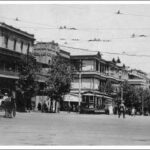

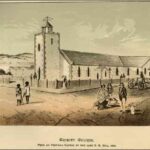
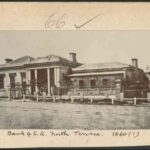

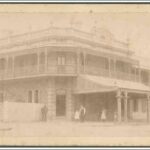
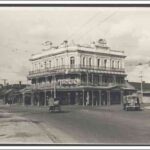
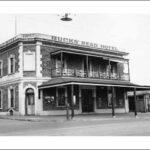
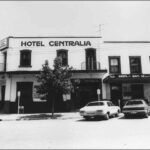
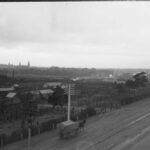
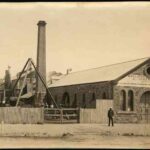
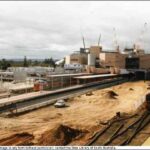
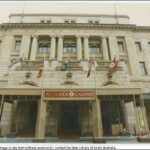
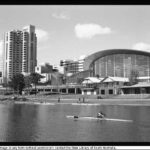

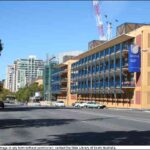
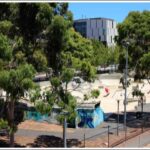
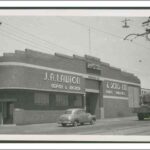
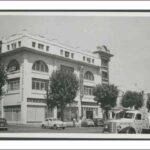
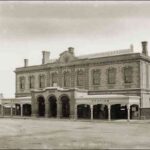
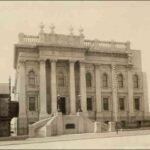
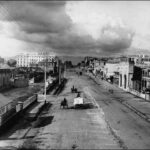
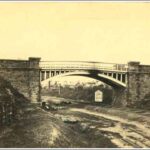
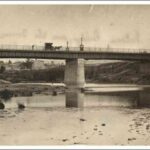

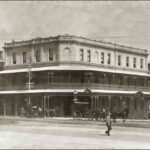
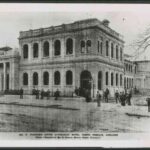
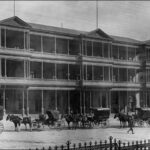
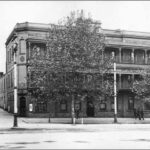
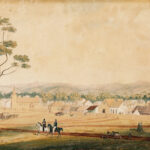
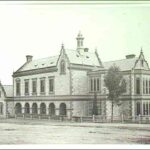
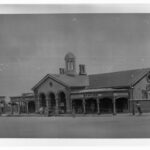
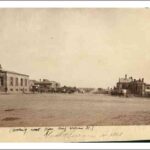
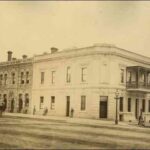
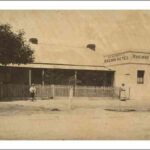
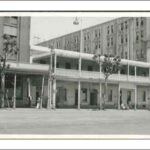
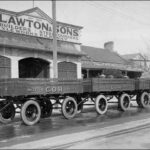
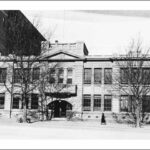
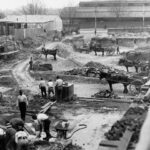
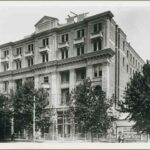
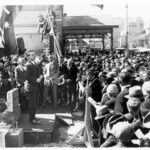
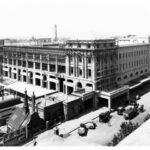
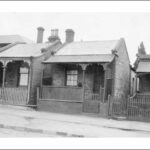
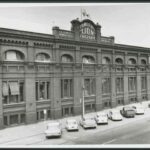

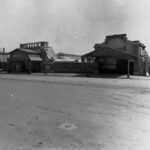
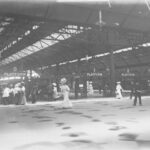
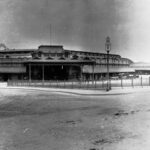
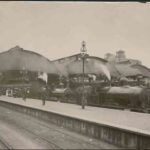
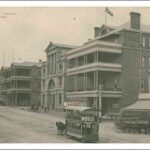
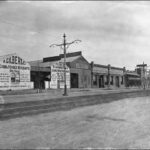
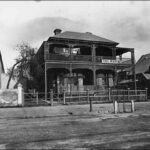
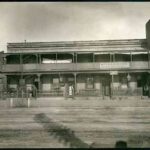

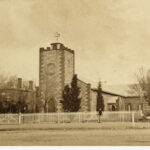
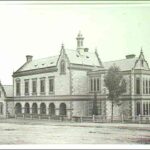
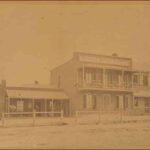
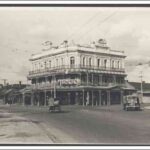
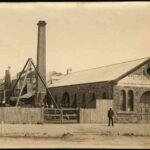

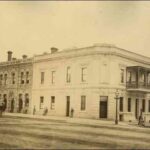
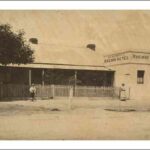
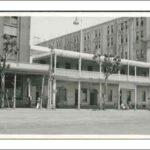
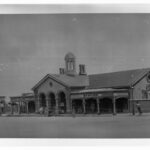
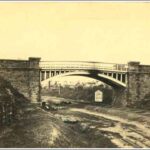
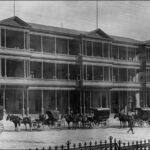
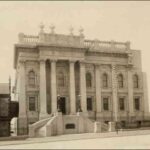
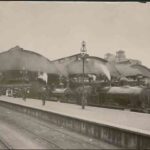
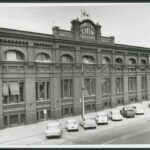

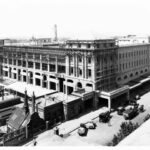
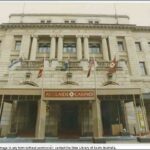
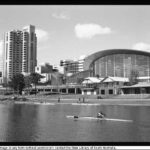
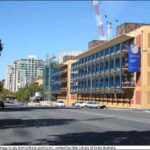
Comments